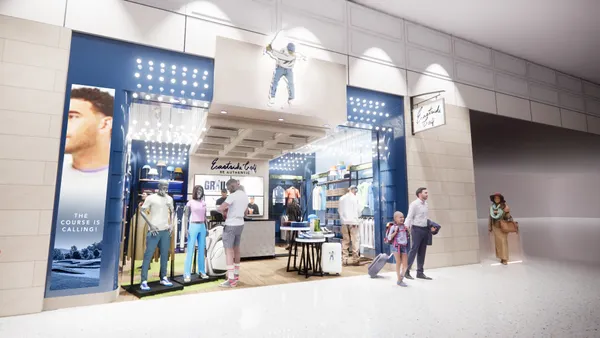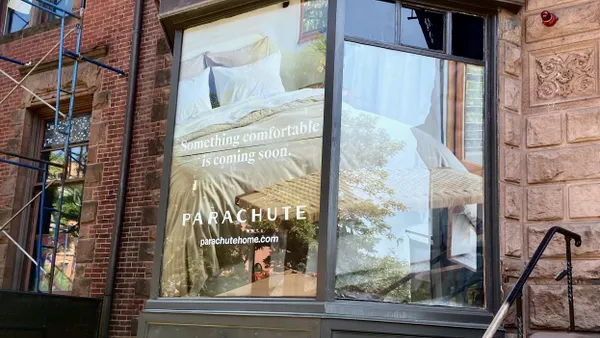Dive Brief:
-
Amazon's U.S. gross merchandise volume is on pace to catch up to Walmart's in two or three years, according to a note from investment bank J.P. Morgan emailed to Retail Dive.
-
"Amazon’s U.S. e-commerce share reached ~40% in 2017," J.P. Morgan analyst Christopher Horvers wrote Monday, adding that his team estimates that grew from about 27% in 2014. "[Amazon] is the 2nd largest U.S. retailer and fastest growing at scale.. ... We look for [it] to continue to take share, reach ~50% of U.S. e-commerce, and catch-up with Walmart’s U.S. GMV in 2020-21."
- The analysts cited the key drivers of Amazon’s gains as its Prime ecosystem, the endless aisle provided by its marketplace, "outsized growth in large, underpenetrated categories (grocery, apparel, & CPG) and removing friction and moving closer to customers."
Dive Insight:
Amazon looms large as the biggest disrupter of retail in the last two decades, but that doesn't mean it's guaranteed to catch up to Walmart, the top retailer in the world, with $495.8 billion in annual revenue and U.S. 3.5% sales growth to $318.5 billion last year.
Amazon is growing faster, with GMV rising 31% last year to $186 billion in 2017 from $141 billion in 2016.
The problem is that what is being calculated as retail sales by many analysts really isn't, according to retail analyst Nick Egelanian, president of retail development consultants SiteWorks. "Amazon’s total worldwide sales for all businesses were $179 million in 2017," he said in an email to Retail Dive. "When you back out international sales, web services (cloud storage), over 30 ancillary businesses, third-party fulfillment and Marketplace sales, we estimate Amazon had about 1% of U.S. retail sales as of December 2017, or about $50 billion."
Half of Amazon's sales come from its marketplace, whose ongoing expansion was called out by J.P. Morgan as a key driver of its growth.
But Amazon is unlikely to see accelerated growth without a major acquisition, according to Egelanian. In fact, by Siteworks' measure, Amazon would need to increase its US. retail sales by nearly 500% to reach Walmart's roughly $400 billion in U.S. retail sales and over $550 billion in worldwide sales as of December 2017.
That's not to say that Amazon isn't seeing tremendous growth, or won't continue to, but its expenses are also growing. "Amazon ... is reaching a key point in its evolution where it is experimenting with Prime subscription price increases, retail price increases, ways to cut delivery costs," Egelanian said. "With 50-60 million of its 100 million Prime household already located in the U.S., we believe that the rate of Amazon’s U.S. Prime membership growth as well as the rate of retail sales growth will begin to slow within in the next 12 to 18 months. This is likely to be accompanied by a jump by Amazon head first into a much larger brick and mortar platform."
Amazon last month announced a hike in its flagship Prime membership in the U.S. by $20, increasing the annual fee to $119. "The value of Prime to customers has never been greater," Amazon CFO Brian Olsavsky said on a conference call then. "The costs are also high."
The question of how Walmart or any retailer can compete against Amazon has become standard in the industry, but it could be based on the wrong premise, considering that there are few retailers with the sprawling (and growing) businesses in cloud services, entertainment, advertising and shipping that Amazon has.
"It’s getting clearer and clearer that Amazon is a tech company and a media company with a retail arm, rather than a retail company with a tech or media arm," Profitero Senior Vice President of Strategy and Insights Keith Anderson told Retail Dive in an interview last month.














